#Waterloo and City Railway
Explore tagged Tumblr posts
Note
I would like to show off the cutiest locomotive in the NRM

Look at them also Stafford cameo
A small electric shunter that is a complete friend...I may ask a friend to make an 009 version or the Kato 11-109 cause that is precious. I've never seen her before, and that is a shame.
#Hazel Asks#Ask Hazel#Hazel Q&A#fren#smol fren#electric shunter#Southern Railway#Southern Railway Service Loco 75s#Waterloo and City Railway
11 notes
·
View notes
Text
The Hound of the Baskervilles: The Problem
Yew hedges are pruned lots of European yew (Taxus baccata), a highly dense tree that can cope with heat, cold and pollution.
A wicket gate is a small narrow door built into a fence, wall or larger gate. You would often find them in city gates as they could be opened to admit pedestrians without incurring the time and security risk of opening the main gate.
Padlocks have been around since ancient civilisation, but the Industrial Revolution made them much easier to make and available to the masses.
Clogs were very popular in Britain at this point as they were cheap, strong footwear for industrial and agricultural workers. People danced in them and it is still a thing in Wales. One British expression for dying is "popped his clogs".
Waterloo was the main railway arrival point in London for ocean liner passengers disembarking at Southampton (a major port of arrival for them), with special trains being put on to meet the various liners. An express train in 1888 could do the journey from the Southampton Docks station in 2 hours and 10 minutes. The electrification of the line from London to Southampton by British Rail led to the closure of this station and nearby Northam in 1966 to passengers, freight services running a year longer. Passenger services were diverted to Southampton Central. The station's platform area is now a car park under the old glass canopy and the station building is now a casino, part of the Gentings Casino chain.
Yellow fever is a viral disease spread by mosquitoes. Most people get over it in five days or so, but 15% will get a second phase including jaundice (hence the name) with a 20%-50% fatality rate at that point. Africans were mistakenly thought to be immune to this when they had in fact merely acquired immunity via burying their dead close to their habitations with resultant mild cases among children. When these traditions were stopped by imperalists, they got it just as bad as everyone else. It is thought it came to South and Central America via the Spanish conquerors.
A successful, easily manufacturable vaccine was developed in 1937. A lot of countries now require some form of yellow fever vaccination, although precise regulations vary.
Shag tobacco is fine-cut tobacco used for self-made cigarettes i.e. roll-ups.
The Ordnance here refers to the Ordnance Survey, which I have discussed in the past.
Princetown prison is HMP Dartmoor, originally opened in 1809 for prisoners of war from the Napoleonic Wars and then the War of 1812. Closed in 1815, it was rebuilt in 1850-1851 to become a civilian prison; today it is a Category C (general population) men's prison.
28 notes
·
View notes
Text


Going through my mind before setting off, I felt like Bilbo Baggins going on adventure. Jumping up and down getting ready, warming up for the ride, while waiting for my friends to come outside and see me off. On my phone I was getting likes and good luck messages from friends on twitter. I knew the encouragement from them was sending positive vibes through me. I then set up a playlist of music, which would help me on my first leg.
Then at 11pm my friends came out, with her boyfriend; I went over to them, and they gave me their blessings. I hugged my friend goodbye, and her boyfriend went with me to film me starting off on my journey. He started the recording, and I said, “see you all in Portsmouth”. Then off I went, into the dark heading west. I started iTunes, ready to press play on playlist. What I didn’t realise was that I had forgotten to save the playlist, so I stopped and picked out a couple of songs. The music kicked in and off I went, knowing I wouldn’t be home till later the next day.
Receiving comments on my phone from friends on twitter still wishing me luck inspired me as I was going at my own pace. The progress along the A13 was going fine, first came the railway bridge nice and easy to get over and once over I could freewheel for a bit. Then onto the second, this time a bit steeper as it crosses the River Rodin. As I was freewheeling down and made sharp ‘S’ turn, off the main road and onto a dedicated cycle path. Halfway down the path I noticed a four-legged animal standing there on the cycle lane. So, I came to a complete stop so as not to disturb it. To my surprise, three more appeared - it was a family of foxes foraging around for food. I kept still and watched, thinking ’just don’t disturb them’. So, for ten minutes I waited.
Then a nutter on an electric bike whizzed by me, giving me a shock, and straight into the path of the foxes. I thought ‘Mad sod!’. The foxes noticed what was coming towards them and quickly scarpered. So, I took off, pedalling slowly to see if they were still around, but the family were gone. Oh well I thought and carried on, knowing I knew was pushed for time as I wanted to get Westminster and be within sight of the tower as Big Ben struck midnight. However, that wasn’t meant to be, because it took me thirty minutes just to reach the edge of the City of London, 2 ½ miles from the tower. I kept looking at the time on my phone. Could I get to Big Ben before midnight? I had five minutes. So, I sped up doing my best.
Then, cycling down Castle Baynard Street, I saw three men on publicly rentable ‘Boris bikes’ up ahead in a narrow tunnel. They were cycling erratically and there was way to overtake them. I thought ‘Great people who can’t ride a safely.’ Looking at the time on my phone, I realised there was now no chance of making it in time, so slowed down waiting for the opportunity to pass them.
After a couple of minutes, where the Embankment passes under Waterloo bridge, the cycle lane widened and I went into high gear flying past them, ringing my bell to warn people on the side pavement that I was about to pass them. When I finally reached Big Ben, it had already chimed midnight, so I pulled over outside the main gates to the Houses of Parliament.
I took the opportunity to look at the notifications on my phone, then took a photo of the clock, showing the ‘ten past twelve’ on its face. ‘Maybe next time I will get here in time,’ I thought.
Five minutes later I was back on the road, for the next leg, heading for the Thames path at Richmond bridge, where I intended to take a break. My usual route to Richmond takes about an hour. The warm night air was making my throat dry, and I was sweating like mad so, about half-an-hour, passing a pub next to Parsons Green, I decided to stop. Unfortunately for me, the pub was closed, and the staff were cleaning up ready to go home. Seeing a woman sweeping up outside, I explained what I was doing and asked if I was too late to get a drink. She said that I was too late, but kindly she went back inside and got me a full pint of water. I drank most of it and poured the rest over my head to cool me down. After thanking her, I got talking to these young gentlemen, who must have drunk the pub dry as they looked totally paralytic. We chatted for about fifteen minutes. I told who I was and explained to them what I was doing. They thought it was a kind act and after that I was back on the road, heading over Putney bridge and along Putney High Street, before turning right at the lights for Richmond.
The travel-time between Putney and Richmond didn’t feel as long as it had done in the past. The roads were very quiet, mostly people walking along the street after a good night out. Then I finally made it, pulling off the main road into a small park then down the ramp onto the Thames path.
Making my way to the park bench I usually sit on, I stopped and got off the bike. Sitting down, I got my food and drink out of my bag and tucked in. I thought it was going to be quiet, however the sound of people still enjoying themselves filled the air. After finishing, I recorded an update video for twitter, stating were I was. Then I decided to move to a different park bench and try and get thirty minutes shut eye.
I called my mother to let her know where I was and after a few minutes, this random stranger approached me. But you will find out more about what happened next in part two…
10 notes
·
View notes
Text

Having recently read a fanfic in which Sherlock and John catch trains to various parts of southern England exclusively from London’s Waterloo station, even when this is not the usual/logical route, I’d like to share this for writers who might not be familiar with the whole business of trains in/to/from London.

Let’s start with the history of how and when rail services came to London. This article explains how and why we have so many terminal stations (short version: because when they were built, the railway companies were privately owned and all needed their own terminus in London).
The main terminal stations are Waterloo (south), Paddington (west), Euston (north-west), King’s Cross (north-east), St Pancras (East Midlands and Eurostar), Liverpool Street (east), Fenchurch Street (south-east) and Victoria (south). There are others (see the article linked above and my husband’s comment below).
As we know, within London and the suburbs, these termini are linked by the London Underground (aka The Tube) network. There is also the Docklands Light Railway (DLR) - a driverless system - and other overground rail services. Here is a map of it all from Transport of London (TfL). Baker Street is served by five tube lines: Bakerloo (brown), Metropolitan (maroon), Jubilee (silver), Circle (yellow), and Hammersmith & City (pink). It’s also only a five-minute walk from Marylebone (the nearest terminal) which itself is just behind the Landmark hotel, which we know as the exterior for The Restaurant Scene.
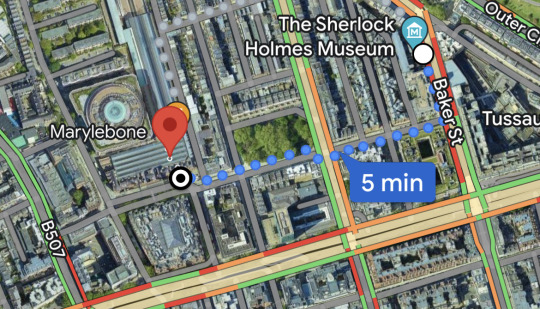
Aside: I think Sherlock is unlikely to catch a bus unless directly related to a case - they’re just too slow for him. But you can find bus maps and all kinds of other TfL mappy delights here.
If you have characters using public transport in the UK, your best bets for accurate research are:
Google Maps (in public transport mode)
National Rail (see the page footer for all the useful stuff)
Transport for London
All these also have apps available.
I’m happy to do Sherlockian Britpicking (my day job is copy-editing) if that’s helpful for you.
If you want to go the full Howard Shilcott, I still very much enjoy reading the rail enthusiasts’ forums posts about the myriad tube-related continuity errors in TEH. I’ll let you Google those for yourself. 😉
———
Ran this past my husband (who is totally the full Howard Shilcott) and he made a few corrections (and a lot of faces!) before I posted: he wishes it to be known that he ‘remains unhappy about [my summary of] Fenchurch Street’ and thinks I should add Charing Cross to the list so people know how to get to Kent. So that’s all clear then. 😂
#London#London travel#London transport#London Underground#London stations#trains#help for fanfic writers#fanfic#trains in England#railways#Railway Britpicking#Britpicking#Britpicker#Why yes I am autistic thank you#Howard Shilcott#info post#infodump#sherlock#British Rail#British trains#English trains#fanfic writing#fanfic Britpick#important details#Sherlock fanfic#Sherlock fanfiction#Sherlock locations
36 notes
·
View notes
Text
James Henry Greathead
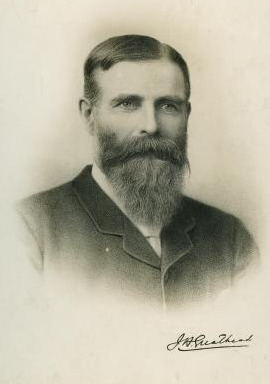
James Henry Greathead a mechanical and civil engineer who lived between 1844 and 1896, was born in Grahamstown, South Africa; to parents of English descent, his grandfather had emigrated to South Africa in 1820
James Henry Greathead is known for his work on the London Underground railways, Winchester Cathedral, and Liverpool overhead railway, he was also one of the earliest proponents of the English Channel, Irish Sea and Bristol Channel tunnels, his invention of the Greathead Shield is why the London Underground is colloquially named the "Tube." as the Greathead Shield could build round tunnels hence tube.
James Henry Greathead''s shield design was built on the work of Marc Isambard Brunel below is a paragraph from James Henry Greathead's Wikipedia page explaining the difference between James Henry Greathead's tunnelling shield and Marc Isambard Brunel's tunnelling shield
"Brunel's shield was rectangular and comprised 12 separate, independently moveable frames; the Greathead solution was cylindrical, and the "reduction of the multiplicity of parts in the Brunel shield to a single rigid unit was of immense advantage and an advance perhaps equal to the shield concept of tunnelling itself", though the face was still dug out by manual labour to begin with. Greathead's patented Shield for Tunnelling Soft Earth used water jets under pressure at the tunnel face to assist in cutting through soft earth as described in the patent. Pneumatic tunnel pressurisation was used to ensure better safety for workers by equalising internal tunnel pressure to its estimated exterior underground pressure beneath the water."
interesting fact you can still see a Greathead shield embedded into the tunnel wall at the bank underground station, the Greathead shield in question was used during the tunnelling of the original Waterloo & City Line in 1898, you can see a picture of the Greathead shield at bank underground station on the article linked below
James Henry Greathead Statue:-
below is a picture of the statue of James Henry Greathead from the James Henry Greathead's Wikipedia page, here are some interesting facts about the statue, the statue is next to the bank underground station in London and on the statue between the base and the statue itself are some metal grilles these grilles are connected to the bank underground station's ventilation system.

References:-
2 notes
·
View notes
Text
This will probably be short, as much of what I like in this chapter (Cosette, Hugo’s feelings about the redesign of Paris) has also been in the previous ones. I can’t ignore this line, though:
“The market-gardens, the timber-yards, and the old buildings have been effaced. To-day, there are brand-new, wide streets, arenas, circuses, hippodromes, railway stations, and a prison, Mazas, there; progress, as the reader sees, with its antidote.”
Hugo’s often in favor of “progress” in the 19th-century sense, so it’s pretty fascinating to see him be more skeptical and sarcastic here? All of the comforts he lists are impressive, but they serve the bourgeois who moved into the neighborhood after its reorganization, not the poor. The cost of this “progress” is the prison, which alludes to the darkness covered up by this image of reform. I think this skepticism may come from this being a more “technological” sort of progress than a social one (although not every 19th-century person would see those as distinct); as a fan of old architecture (see: all his building digressions here, most of The Hunchback of Notre Dame), Hugo understandably was distressed by the changes to Paris and by what was defined as “better” architecturally and structurally for the city. Tracing the impacts of this on the poorer neighborhoods his characters inhabited is one way to shift the focus from the technological veneer of progress to the lingering social ills in Paris.
Hugo’s thoughts on history here are interesting as well. Like with Waterloo, the people are its arbiter (”The memory of the populace hovers over these relics of the past”). Le Petit-Picpus and related areas are preserved (by name) in their memories even after their physical structures are gone, deciding what’s important in the same way they decided Napoleon’s fate (this also may be relevant to Hugo’s longing for home, as he decides which parts of Paris to preserve from his memory in this book). He provides documentary evidence (the map) to confirm all of this and traces the history of Petit-Picpus’ destruction, but ultimately, the people’s voices are more important than these papers; their continued use of these names is why they’re remembered at all.
21 notes
·
View notes
Text
Combining two of my own interests in a way that no one asked for and will be interesting to maybe three other people lets go: Which London Underground lines the ghosts would have been able to use! This may be a long read.
Going with ghosts from Fanny onwards, as they are the only ones that would have been able to.
Fanny - born 1855, died ambiguously past some point in 1912
Bakerloo - opened 1906, would have been able to use it!
Central - opened as the Central London Railway in 1900, so yup! She also would have been around for two of its expansions, one in 1908 and another in 1912.
Circle - not technically its own line in her lifetime, but the tracks the now circle line is on were owned by two railway companies - the Metropolitan Railway and District Railway.
District - opened 1868, had several expansions within her lifetime from then.
Hammersmith & City - opened 1864. She also would have been around for it becoming electricity operated in 1906!
Jubilee - no, opened as the Jubilee line in 1979.
Metropolitan - opened 1863, made electric in 1905 (not north of Rickmansworth until 1961)
Piccadilly - opened 1906
Waterloo & City - opened 1898, although at this point it technically was not its own underground line.
Captain - assuming he was born sometime in the 1890s-1900s and died in/just past 1945
Bakerloo - yep! Would also be alive for its claim of the initially Metropolitan Stanmore branch!
Central - depending on exactly when he died he could've seen some of this lines expansion post-ww2, but other than that, it was around in his lifetime!
Circle - would have been around for the Circle line becoming more similar to how it is today, although it still didn't technically become its own line until 1949 (assuming he's dead at that point).
District - yeah it was there. Same as Fanny really.
H&C - Would have seen its expansion in 1936, which replaced the old District line up to Barking.
Jubilee - same as Fanny
Metropolitan - also largely the same as Fanny
Northern - opened in 1937 from a combination of two railways. Expanded a bit between 1939 and 1941. There were further plans for extension but these were put on halt due to the war and eventually scrapped in 1954.
Piccadilly - would have been alive for its expansion in the 1930s.
W&C - around for the replacement of the original wooden trains on the line in 1940.
Pat - born 1945, died 1984
Bakerloo - around for the closing of the Stanmore branch on the Bakerloo line in 1979 following the opening of the Jubilee line.
Central - yeah it was there for him. No major changes.
Circle - Became its own line in 1949 when he would've been 4 ig lol.
District - no major changes
H&C - still nothing really new
Jubilee - alive for its opening!
Metropolitan - alive for the switch to electric trains between Amersham and Chesham in 1961
Northern - no major changes
Piccadilly - would have been alive for the expansion to Heathrow Airport terminals! Former terminal 1 and terminals 2 and 3 were added between 1975-77
Victoria - woo vicky line is here! Construction began in 1962 and it opened gradually between 1968-71.
W&C - no major changes
Julian - born ??? like the 1950s/60s maybe?, died 1991 or 93 I literally can't remember rn my bad
also going to omit lines where nothing drastic happens now soz
Central - just missed out on being able to witness the closure of the Epping to Ongar service in 1994.
H&C - became its own real line in 1988!
Jubilee - If he died in '93 not '91, he may have been able to witness the very beginning of the extension of the Jubilee line
Piccadilly - also would have seen the expansions to Heathrow, but with terminal 4 as well, which was added in 1986.
Victoria - same as Pat
W&C - just missed out on being able to witness the Waterloo and City line actually become its own line in 1994.
#uhh yeah#i could not sleep at all and this is what came as a result#bbc ghosts#tbh this was not even that thorough research so apologies if some of this is false... if it is please blame the tfl website#i also think ive got a cold???#so mb if this isnt coherent
8 notes
·
View notes
Text
Network security has become a major issue in the business world. With most of the organizations relying on technology using multi-networked computing environments, making it easy for the flow of information and also sharing resources at the same time, network security has become a crucial subject. The advent and compulsion of the existence of multiple types of networks in an organization have complicated the arrangement of security implementation. This may lead to the issue of the information being available to everybody using the network, which is evidently a lapse of network security. Business involves a lot of critical data, which needs to be sorted and reserved to and within the department depending on the requirement. Securing and stabilizing the network ensures the confidentiality of data and effects positively towards the productivity and functionality of a business.Providing secure information technology (IT) services to colleges and universities is a special and unique challenge. Unfettered and timely access to all enormous quanti¬ties of information is higher education’s life¬blood and is a key to its success in educating its students and generating new ideas and knowledge. The situation becomes more challenging when a new technology is added and integrated into the existing setup and the same or advanced level of accessibility and protection is expected. Thus, the need of the hour is to identify the security loopholes and develop security policies especially for environments where the wired and wireless networks co-exist.The aim of the project is to investigate the process of integrating wireless solutions with wired enterprise networks and its business impacts on network security in educational institutions Objectives• To identify the criteria of effective wireless networks. • To identify the criteria of security for integrated wired/ wireless networks in organizations OR The topics examined include the provision of air terminals, correctly sized down conductors and an effective earth system to conduct direct lighting strike currents safely to earth. In addition, the paper examines the recommendation in the standard to the use of co-ordinated surge protection devices with each piece of electrical and electronic equipment in the substation. The paper also includes the importance of maintaining lightning protection components for the 30-35 year expected life of a substation. Two media headlines from the past two years dramatically illustrate the disruption that can be caused by lightning strikes on electrical substations. One incident is from the city of London in the UK and the other from a Southern California suburb in the US.On 19 April 2012, at about 5:30 pm, a lightning strike at the Wandsworth substation caused a voltage surge that damaged railway signalling equipment at two of London’s busiest stations, Victoria and Waterloo. This caused cancellations and long delays in train services inconveniencing thousands of homebound commuters. Engineers worked through the night to restore normal services the following morning (BBC News).On 1 March 2014 at 02:30 AM, a lightning strike at the Harvey-Lynn substation in Riverside, California caused a fire and three sub-transmission lines went out of service affecting 21,000 customers including a hospital. Maintenance crews worked through the night to restore power to most consumers by 06:30 AM (CBS Los Angeles).. The chart below shows that the number of power outages affecting 50,000 or more customers in the US has increased from about 180 in the 2001 to 2005 period to over 250 outages in the 2006 to 2010 period (Amin). A survey conducted by The National Lightning Safety Institute (NLSI) of the US in data compiled for the year 2008 says that 30% of all power outages in the US are lightning-related and cost over $ 1 billion annually (NLSI Report) Read the full article
0 notes
Text
Beer Events 12.1
Events
Basketball invented (1891)
Hermetically Closing Jug (1896)
Conrad Eurich bought Spring Garden Brewery (Baltimore, Maryland; 1908)
Grace Brothers Brewery closed (Santa Rosa, California; 1918)
Ontario, Canada voted for government control of liquor instead of prohibition (1926)
Prague tavern opened, charging a flat hourly fee for drinking (1937)
Playboy 1st published (1953)
Michelob bottles 1st sold (1961)
Erik Helm and Richard Thorne patented Electrolysis of Fermented Beverages (1970)
Exploitation film “Sixpack Annie” premiered (1975)
Novato City Council approved Moylan's brewpub (California; 1993)
Anton Steinecker patented a Device for Heating Wort During Beer Production (1999)
Beermann's bottled 1,077 1-liter bottles of their Bourbon Barrel Barley-Wine Ale (2001)
Breweries Opened
Frank Steil Brewing, Maryland (1900)
Hudson County Consumers Brewing, New Jersey (1901)
Salt Lake Brewing, Utah (1984)
Thomas Kemper Brewing, Washington (1984)
Okanagan Springs Brewery, Canada (1985)
Lord Nelson Brewery Hotel, Australia (1986)
Pete's Wicked Brewing, California (1986)
Big Time Brewing, Washington (1988)
Grand Ridge Brewing, Australia (1988)
Kieler Brauerei, Germany (1988)
Black Mountain Brewing/Ed's Cave Creek, Arizona (1989)
Heritage Brewing, California (1989)
Pink Elephant Brewery, New Zealand (1990)
Minnesota Brewing, Minnesota (1991)
Rock Bottom #1, Colorado (1991)
Brewery at Lake Tahoe, California (1992)
Hangtown Brewery, California (1992)
Giatt Brothers Brewing, Canada (1993)
Northen Lights Brewing, Washington (1993)
Union Station Brewing, Rhode Island (1993)
Waterloo Brewing, Texas (1993)
Feathers Brewing, Canada (1994)
Long Island Brewing, New York (1994)
Galveston Brewery, Texas (1995)
Grebbestad Bryggeri, Sweden (1995)
Wilmington Brewing, North Carolina (1995)
Brass Ring Brewing, California (1996)
Dublin Brewing, Ireland (1996)
Huske Hardware House Brewing, North Carolina (1996)
King George Brewery, Georgia (1996)
La Fourche Brewing, Louisiana (1996)
Live Oak Brewing, Texas (1996)
Macau Brewing, Macau (1996)
Old North State Brewing, North Carolina (1996)
Skewers Brewpub, California (1996)
Sonora Brewing, Arizona (1996)
Volcano Brewery, New Mexico (1996)
Brasserie d Sainr Amand, France (1997)
Double Barrel Brewing, South Carolina (1997)
Foundry Ale Works, Pennsylvania (1997)
Park City Brewing, Utah (1997)
Railway Brewing, Alaska (1997)
Sagan Beer, Japan (1997)
Sunshine Coast Brewery, Australia (1997)
Mac & Jack's Brewery, Washington (1998)
Maxwell's Brewery & Pub, Washington (1998)
Race Book Brew Pub, Connecticut (1998)
Blue Frog Grog & Grill, California (1999)
Gem of the Sea Brewing, California (1999)
Holgate Brewhouse, Australia (1999)
Pearl Street Brewing, Wisconsin (1999)
Back Street Brewery, California (2001)
4th Street Brewing (Oregon; 2008)
Two Roads Brewing (Connecticut; 2012)
0 notes
Video
youtube
Why Were WHSmith's Station Bookstalls So Popular? | Off the Rails Nov 10, 2024
From the linked text article,
https://www.railwaymuseum.org.uk/objects-and-stories/why-were-whsmiths-station-bookstalls-so-popular
When Station Hall reopens in 2025 our restored WHSmith bookstall—which was installed at Waterloo Station in 1921—will be proudly on display. Such bookstalls became a common sight at railway stations following their introduction at Euston in 1848, with 1,240 stalls in place by 1902. Why did they become so popular?
The (very quick) history of the WHSmith station bookstall
Station bookstalls have been part of the station landscape for more than 180 years, supplying us with the provisions we need to make our journeys more comfortable. According to the 1919 memoirs of bookstall employee William Vincent, the first station bookstall was on Fenchurch Street station in 1841, set up by Horace Marshall.
By 1848, well-known high street staple WHSmith was on the scene with a bookstall at Euston station, the first of a nationwide spread across the country that grew to 1240 station stalls by 1902. WHSmith’s didn’t just sell books, they also ran subscription libraries, where for a fee books could be borrowed and returned along the network (public libraries were not widely available until the later 19th century). They bought the copyright of popular authors allowing them to sell cheap editions of in-demand books (nicknamed 'yellowbacks') as well as publishing books specifically suitable for railway passengers.
Newspapers were a large part of the WHSmith business—their boast being 'First with the news' stems from their pre-railway enterprise, distributing newspapers by coach. The growth of the railway network helped their profitability and distribution of newspapers by train, on custom-made vans, meaning passengers could, for the first time, access that day's news. This was a revelation—pre-rail it would take over two days to distribute newspapers to towns and cities outside of London.
As a result of the faster spread of news, the availability of affordable reading material and the chance to read while traveling, station bookstalls significantly influenced literacy levels, awareness of current events and opportunities for self-improvement.
...
0 notes
Text
City Guide: Best Areas for Student Housing in Epsom

Epsom is the university town of UCA and Nescot College; the students can reside in many neighborhoods in which they can experience safe and luxurious living and also have good connections for commuting. This is a detailed guide that explains the best places for students to live in.
Town Centre
Popularity Rating: 4.8/5
The central area of Epsom provides the most attractive student accommodation with amenities as follows:
Key Benefits:
- Walking distance to UCA (10-15 minutes)
- Direct access to Epsom Railway Station
- Average rent: £500-650/month (shared housing)
- Over 200 retail outlets at Ashley Centre
- 24/7 convenience stores
- Multiple gyms and fitness centers
Popular Streets:
- High Street
- Upper High Street
- Station Approach
- Ashley Road
Woodcote Green
Popularity Rating: 4.5/5
Along with its tranquil environment, it is also known for being close to parks:
Features:
- 15-20 minutes walk to UCA
- Average rent: £450-600/month
- Epsom General Hospital Nearby
- Woodcote Green Garden Centre
- Multiple bus routes
- Quieter residential area
Horton
Popularity Rating: 4.3/5
Young NESCOT students who are among the crowd at onsite convocation are some of the groups known as:
Highlights:
- 10 minutes to NESCOT
- Average rent: £400-550/month
- Horton Country Park, close to the place
- Safe routes for cycling
- Constant movement of buses
- A student-friendly community
Ewell
Popularity Rating: 4.6/5
Ideal serenity and peacefulness of suburban living and urban convenience:
Advantages:
- 20 minutes to UCA by a bus ride
- Average rent: £450-575/month
- Ewell West and Ewell East stations
- A feeling of the historical village
- Bourne Hall Park
- Several grocery supermarkets
West Ewell
Popularity Rating: 4.2/5
Inexpensive alternative with well-structured infrastructure:
Key Points:
- 25 minutes to UCA by bus fare
- Average rent: £375-500/month
- Shops on the shopping parade
- Regular, scheduled bus connections
- Calm residential streets
Transport Connectivity
Rail Links:
- Epsom to London Victoria: 35 minutes
- Epsom to London Waterloo: 40 minutes
- Sutton is a 15-minute drive from here
Bus Services:
- E5: Town Centre to UCA
- 460: Epsom to Kingston
- 418: West Ewell to Kingston
- 470: Epsom to Sutton
Safety and Security
Crime rates by area (annual incidents per 1,000 residents):
- Town Centre: 65
- Woodcote: 38
- Horton: 42
- Ewell: 45
- West Ewell: 40
Student Amenities by Area
Study Spaces:
- Epsom Library (Town CentreLeisure Facilities:
- Rainbow Leisure Centre
- Epsom Downs
- Cinema at Ashley Centre
- Multiple parks and green spaces
Shopping:
- Ashley Centre (Town Centre)
- Kiln Lane Retail Park
- Local markets
- Independent shops
Budget Considerations
Average Monthly Costs:
- Rent: £375 - 650
- Utilities: £75 - 100
- Internet: £20 - 30
- Local transport: £45 - 60
- Groceries: £200 - 250
Tips for Finding Accommodation
1. Start searching 3-4 months before term
2. Consider house shares for better value
3. Check council tax exemption status
4. Verify landlord accreditation
5. Read reviews from previous tenants
6. Check proximity to public transport
7. Visit the area at different times
Every neighborhood in Epsom has its benefits for students whether we are referring to the lively Town Centre or the quiet suburbs of Woodcote Green. Think about what is important to you - whether being near campus, budget limitations, or lifestyle preferences - when choosing your perfect location. Do not forget to consider both the direct costs and the transport expenses when making your decision.
This guide helps students make informed choices about their accommodation location in Epsom, considering factors like accessibility, safety, amenities, and budget constraints.
Student Tenant - Your Home Away from Home
Finding the perfect place to stay is important for international students and Student Tenant aims to make this process very simple. Staff at Epsom's most reliable student housing company, we provide:
- The best sites are in Epsom
- Apartments, which come fully furnished and modern
- All-expenses-paid holidays
- 24/7 technical support to fix maintenance issues
- Convenient payment schemes
- Secure booking practice
- Multilingual assistance
Find out how you can live in the most comfortable and convenient place during your foreign study! Check the website www.studenttenant.com to get the most comfortable and cheap student accommodation and housing agencies that will suit international students. Whether you want a single room or a fully furnished apartment student tenant will provide you with all the necessary options so your living would be safe, comfortable and happy.
0 notes
Text
Discover the Most Unique Venues in London for Your Next Event
London is a city rich in history, culture, and architectural wonders, making it a prime location for hosting unforgettable events. Whether you’re planning a wedding, corporate gathering, product launch, or a private party, finding the right venue can set the tone and elevate the experience for your guests. If you’re looking to break away from the traditional options and make a lasting impression, London offers an array of unique venues that combine style, character, and originality. In this blog, we’ll explore some of the most extraordinary unique venues London has to offer and how they can transform your event into a remarkable experience.

1. The Gherkin – Iconic Skyline Views
For those who want to impress with breathtaking views of London’s skyline, look no further than The Gherkin. Located in the heart of the city’s financial district, this iconic, glass-domed skyscraper offers a sleek and modern setting. The panoramic views from the top floors provide a stunning backdrop for any event, from corporate dinners to elegant receptions. The contemporary design of the space complements any theme, and its exclusive ambiance ensures that your event will feel special and memorable.
2. The Vaults – Underground Creativity
For a quirky, immersive experience, The Vaults in Waterloo is a hidden gem. This underground venue is known for its raw, industrial aesthetic and offers a blank canvas for event planners to unleash their creativity. The space is versatile enough to host anything from art exhibitions to theatrical performances, corporate parties, or edgy weddings. With exposed brick walls, moody lighting, and customizable spaces, The Vaults provides an alternative atmosphere that lends itself to creative and unconventional events.
3. Kew Gardens – A Botanical Wonderland
If you’re seeking a serene and enchanting setting, Kew Gardens offers a venue like no other. Set in one of the world’s most famous botanical gardens, the venue combines nature with elegance. Options like the Nash Conservatory or the Orangery provide a lush, green backdrop for weddings, galas, or outdoor receptions. The beauty of Kew Gardens lies in its tranquil, natural environment, where your guests can mingle among exotic plants and flowers while enjoying the historic architecture of the venue.
4. Natural History Museum – Timeless Grandeur
For an event steeped in history and awe-inspiring surroundings, the Natural History Museum is a spectacular choice. This grand, Victorian-era building features vast galleries and the iconic Hintze Hall, complete with a skeleton of a blue whale suspended from the ceiling. The museum’s dramatic architecture and rich historical significance create an unforgettable atmosphere, making it a top choice for gala dinners, product launches, and black-tie events. Imagine dining under the gaze of prehistoric creatures—a truly unique experience.
5. Shoreditch Studios – Industrial Chic
Shoreditch Studios is a popular venue for those seeking a trendy, urban vibe. Housed in a former Victorian railway station, this space blends industrial charm with contemporary touches. Exposed brick walls, steel beams, and high ceilings make it a perfect venue for creative events, photo shoots, pop-up galleries, and fashion shows. Located in East London’s vibrant Shoreditch neighborhood, the venue embodies the area’s edgy, artistic energy and offers a versatile space that can be tailored to any occasion.
6. Alexandra Palace – Historic Entertainment Venue
Affectionately known as "Ally Pally," Alexandra Palace is a historic entertainment venue with breathtaking views of London. The palace boasts several unique event spaces, from its grand Victorian theatre to the Palm Court, an elegant glass-roofed space perfect for receptions and conferences. Whether you’re hosting a large-scale event or an intimate gathering, Alexandra Palace’s unique blend of history, grandeur, and modern facilities makes it a standout venue choice in London.

Conclusion
Unique venues London offer an array of options for hosting events that are anything but ordinary. From the sleek modernity of The Gherkin to the natural beauty of Kew Gardens and the underground charm of The Vaults, the city is brimming with spaces that cater to every taste and style. By choosing a distinctive venue, you can create a truly memorable event that reflects your personality, brand, or vision, ensuring that your guests leave with lasting impressions. No matter the occasion, London’s one-of-a-kind venues provide the perfect setting for making your event extraordinary.
0 notes
Text
The Crooked Man
This one is from Memoirs - we have two more from that collection left to go after this.
Oddly enough I was actually reading this story at around the same time that Watson is reading!
Aldershot was - and still is - a major "garrison town" located 31 miles SW of Charing Cross. Around 20% of the British Army were based there in 1914.
Holmes says "Elementary!"
Aldershot is accessible by direct train from Waterloo - today electric trains serve it from there in just over an hour.
The Crimea of course refers to the Crimean War of 1853-56; the one of the Light Brigade, Florence Nightingale and Mary Seacole. It was the first major war to make use of railways, telegraphy and photography.
The Mutiny refers to the common British name for the uprising in India in 1857-58 against the East India Company. Klinger devotes an entire chapter to it. The trigger, although resentments had been around for a while, was rumours that the grease in cartridges for the Lee Enfield rifle requiring the paper to opened using the mouth contained beef tallow and pork lard, offensive to Hindus and Muslims respectively.
When a group of mostly Muslim soldiers refused to accept the cartridges, were court-martialled and were sentenced to hard labour in the city of Meerut, an uprising broke out and spread across much of India. Support for it was by no means universal.
It took over a year for the British to defeat the insurgents in a war that saw many atrocities, the local population suffering the worst. Exaggerated reports of Indian war crimes in the British press fuelled a complete lack of sympathy in British soldiers and public alike.
The conflict ended with the capture or death of the rebel leaders, an amnesty for those who had not murdered Europeans and the end of the East India Company's rule with the Crown taking over, followed by some reforms to involve Indians more in administration.
Roman Catholicism had become tolerated by this point with nearly all legal restrictions removed, although discrimination remained, especially in Ireland.
Brain fever turns up again!
A florin was a two shilling coin.
This is the only short story appearance of a Baker Street Irregular.
Cantonments were military garrisons.
Colour Sergeant is an NCO rank in the infantry regiments of the British Army - while not in actual use at the time, it was commonly used to refer to the quartermaster sergeant i.e. the sergeant in charge of the company supplies. It is the equivalent to Staff Sergeant in other units.
The story of Uriah and Bathsheba can be found in 2 Samuel Chapters 11 and 12. It's a common one for artist because it contains naked lady.
26 notes
·
View notes
Text
Weekly Quiz - 26/1/24 - Answers
Question One What is the busiest railway station in London? Answer: Waterloo Question Two Event One ‘Ben Hur’ won the Best Picture Oscar Event Two John F. Kennedy is elected U.S. President Event Three The Olympic Games took place in Rome In what year did these three events occur? Answer: 1960 Question Three Dart player Phil Taylor is from which English city? Answer:…

View On WordPress
0 notes
Text

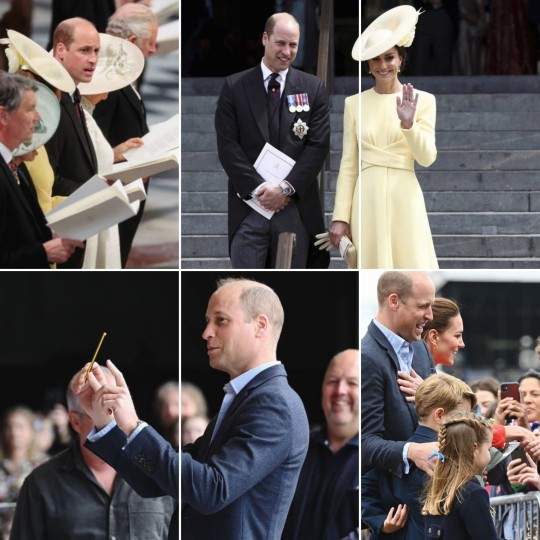


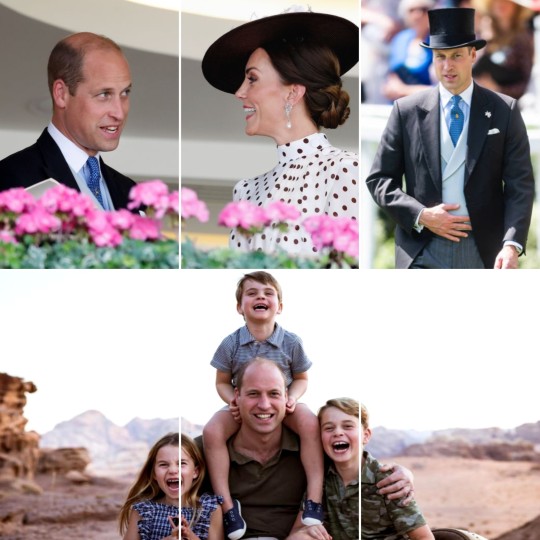

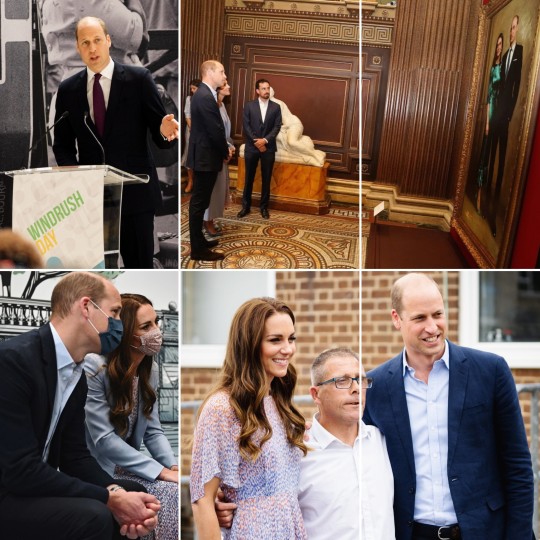
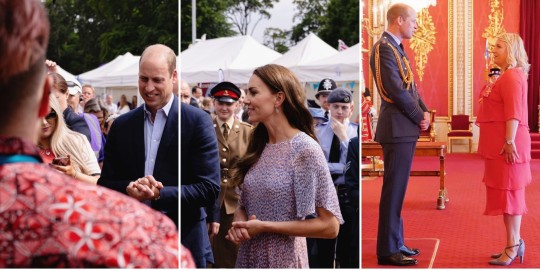
─ •✧ WILLIAM'S YEAR IN REVIEW : JUNE ✧• ─

1 JUNE - William attended the Senior Colonels' Conference and Dinner at Clarence House.
2 JUNE - William took part in The Queen's Birthday Parade on Horse Guards Parade along with other members of the Royal Family at which The Queen's Colour of the 1st Battalion Irish Guards was trooped. On the conclusion of the Parade, they rode back to Buckingham Palace where he appeared on the Balcony along with Catherine and their children to witness a fly-past marking the Queen’s official Birthday. In the evening, William was present at the lighting of the National Beacon at Buckingham Palace to commemorate the Platinum Jubilee.
3 JUNE - William and Catherine attended the National Service of Thanksgiving for Her Majesty's Platinum Jubilee in St. Paul's Cathedral. After the Service, they a attended Reception at Guildhall given by the Rt. Hon. the Lord Mayor and the City of London Corporation.
4 JUNE - William and Catherine along with George and Charlotte visited Cardiff Castle where were received by Her Majesty's Lord-Lieutenant of South Glamorgan (Mrs. Morfudd Meredith). Later they attended the Platinum Jubilee Concert at Buckingham Palace.
5 JUNE - William and Catherine attended the Platinum Jubilee Street Party at Kensington before attending the Platinum Jubilee Pageant in the Mall. They later appeared on the Buckingham Palace Balcony along with their three children.
7 JUNE - William held an Investiture at Buckingham Palace on The Queen's behalf.
8 JUNE - William was spotted selling the Big Issue Magazine in London.
13 JUNE - William and Catherine attended the Order of The Garter Service at St. George's Chapel in Windsor.
14 JUNE - William attended a Duchy of Cornwall Meeting at 10 Buckingham Gate. Afterwards, he attended the Grenfell Tower Five Year Memorial Service along with Catherine.
15 JUNE - William visited the Lionesses team at St. George's Park ahead of the European Championship where he was received by Mr. James Leavesley (Vice Lord-Lieutenant of Staffordshire).
16 JUNE - He held a United for Wildlife Meeting at Kensington Palace.
17 JUNE - William and Catherine attended Day Four of Royal Ascot.
19 JUNE - Kensington Palace released a new photograph for Father's Day featuring William with his three children.
21 JUNE - A special issue of the Big Isuue magazine was released to mark William's 40th Birthday. He also visited Dave Martin, the Big Issue seller with whom he sold the magazines in London earlier in the month. William and Catherine held a Meeting with the Lord Hague of Richmond, Mr. Simon Patterson and Ms. Amanda Berry (Chairman, Vice-Chairman & Chief Executive, The Royal Foundation) via video link.
22 JUNE - William and Catherine visited Brixton House Theatre where they were received by Mr. Christopher Wellbelove (Deputy Lieutenant of Greater London). Afterwards, Her Majesty's Lord-Lieutenant of Greater London (Sir Kenneth Olisa) recieved them as they attended the unveiling of the National Windrush Monument at Waterloo Railway Station.
23 JUNE - William and Catherine spent their day carrying out engagements in Cambridgeshire. First, they were received by Her Majesty's Lord-Lieutenant of Cambridgeshire (Mrs. Julie Spence) as they visited Fitzwilliam Museum where their first joint portrait was unveiled. Afterwards, they visited East Anglia Children's Hospice - Milton where they were received by Mr. Benjamyn Damazer (Vice Lord-Lieutenant of Cambridgeshire). Subsequently they were received by Mrs. Caroline Bewes (Deputy Lieutenant of Cambridgeshire) at Jimmy's Cambridge. Later Williama and Catherine spent their time at the first-ever Cambridgeshire County Day at Newmarket July Course.
24 JUNE - William held an Investiture at Buckingham Palace.
#year in review : william#year in review : 2022#review 2022#william review : june#british royal family#british royals#british royalty#royalty#royals#prince william#prince of wales#the prince of wales#duke of cambridge#princess of wales#the princess of wales#princess catherine#kate middleton#duchess of cambridge#prince george of wales#prince george#princess charlotte of wales#princess charlotte#prince louis of wales#prince louis#queen elizabeth ii#queen elizabeth#king charles iii#queen camilla#king charles#brf
93 notes
·
View notes
Note
MORE give me the secrets of the tube
well. when you take the new southbound northern line past bank in may you will intersect with the century-old tunnel for the City and South London Railway at King William Street that had to be demolished for the works. there is a WWI hospital underneath Waterloo which has some of the old equipment left in situ, as well as being used for general storage. Aldgate station was built on a plague pit. This one is a bit darker, but did you know that if you take the Piccadilly line to Cockfosters, you will end up in Enfield
#also girl it is 1am we should both be asleep.#im trying to think of more proper secret type things but im coming up a bit short rn
3 notes
·
View notes